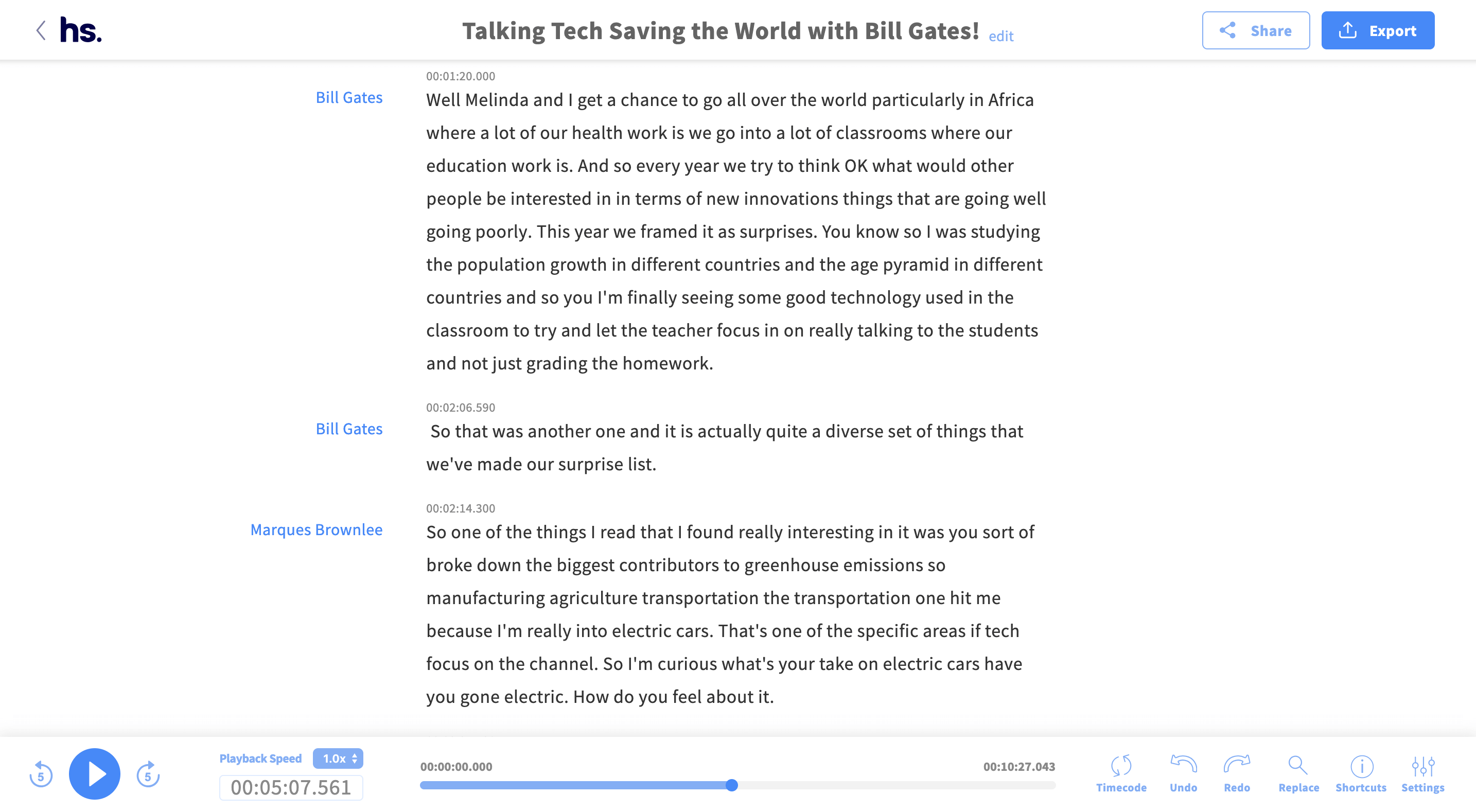Transcribing an Interview | 5 Steps & Transcription Software
Transcribing is converting speech to text word for word. Transcribing is a common practice when conducting interviews because it enables you to perform analysis.
How to transcribe an interview in five steps:
- Choose your preferred transcription method.
- Transcribe the audio (using transcription software).
- Add speaker designation and time stamps.
- Clarify the transcript where needed.
- Proofread the transcript.
Transcription software comparison
Transcription methods
Before you start transcribing, you first need to determine what transcription method you want to use. The best method depends on the goal of your transcription.
Verbatim transcription
Write down every single word, including pauses, the expression of emotions such as laughter, stuttering, and hesitations such as ‘uh’.
This type of transcription is mostly used in the legal profession or in research where you’re not only interested in what is said but also how it is said.
Intelligent verbatim transcription (most common)
Write down every word, but without irrelevant fillers like ‘um’, ‘yeah’, and ‘you know’. To improve readability, you can also fix grammar mistakes, broken sentences, and long paragraphs.
This method is more readable than verbatim transcription, but some data – such as emotions, pauses and hesitation – is lost in the process.
Edited transcription
A summarised and edited version of an intelligent verbatim transcript. In addition to omitting fillers like ‘you know’, irrelevant sentences can be omitted if it doesn’t change the meaning of the story.
Altering the transcript
If the audio quality is bad or the conversation itself needs clarification, you are allowed to make changes in the transcript. For instance:
- Adding a clarifying comment: ‘I showed him that this option [raising prices] would be beneficial for profitability.’
- Marking unclear or missing audio with ellipses: ‘I showed him … would be beneficial for profitability.’
- Emphasising words: ‘Increasing prices is needed for profitability.’
Example transcript
There are no rules for formatting and structuring a transcript. However, most transcripts contain the following information:
- Names of the interviewer and interviewee (can be anonymised)
- Date and time when the interview took place
- Location of the interview
- Speaker designation (who says what?)
- Line numbers and time stamps (optional)
Interviewee: Sales manager John Sowoka (JS)
Date and time: April 5th 2019 16:00
Location: Headquarter company X in York
JS: You’re welcome! I’m happy to answer your questions, because the subject interests me too.
RS: I’d like to start with a question about your relationship with your customers. What does this relationship look like?
JS: I always strive for a relationship where I truly know what challenges my customer is facing and how I can help with them. We’re not just a supplier of products, but we actually try to help. The only way that’s possible is by understanding what they want to accomplish.
Analysing interview transcripts
After transcribing the interview(s) it is time to start analysing. There are several techniques for doing this – coding and categorising is one of them.
This means that you link keywords (e.g., ‘understanding customer’) to the answers you’ve received to your questions. Based on these keywords you are able to find connections between the answers of different respondents.
You can also use methods such as content analysis, thematic analysis, or discourse analysis.
If you quote from an interview in your paper, make sure you correctly cite the source. Learn how to cite an interview in MLA and APA.
Transcription software
Transcribing interviews takes a lot of time, but luckily transcription software is developing quickly. Using transcription software can help you speed up the process.
Accuracy
Most software is able to accurately convert English speech to text. However, the audio quality must be good in order for the software to work. That means a noise-free background, no over-talk, clear accents and good microphones.
If the audio quality is too poor for automatic transcription, you unfortunately have to dictate it or transcribe it manually.
Comparison
We tested and reviewed the transcription software below using the audio of a YouTube video in which Bill Gates is interviewed. The audio meets all the criteria listed above.
| Hourly rate (pay as you go) | Hourly rate (monthly plan) | Free trial? | |
|---|---|---|---|
| Happy Scribe | $13.40 (approx. £10.88) | $11.18 (approx. £9.08) | 30 minutes |
| Trint | – | $13.33 (approx. £10.83) | 30 minutes |
| Transcribe | $6 (approx. £4.87) | – | 1 minute |
Cite this Scribbr article
If you want to cite this source, you can copy and paste the citation or click the ‘Cite this Scribbr article’ button to automatically add the citation to our free Reference Generator.
Streefkerk, R. (2022, May 06). Transcribing an Interview | 5 Steps & Transcription Software. Scribbr. Retrieved 23 June 2025, from https://www.scribbr.co.uk/research-methods/transcribing-an-interview/


